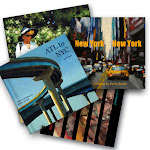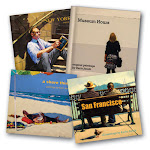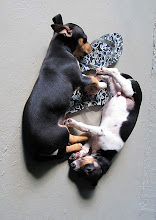6 x 6"
oil on panel
sold
sold
Considered Pablo Picasso's most famous painting, Guernica, was a powerful political statement depicting the horrors and devastation of the Nazi's bombing of the town Guernica during the Spanish Civil War in 1937. The size of Picasso's painting is 25 1/2' x 11' which effectively awes any viewer.
Picasso was working on a mural at the time of the bombing, commissioned by the Spanish Republican government for the upcoming Paris exhibition but scrapped his original idea and began planning his composition of Guernica. News of the massacre reached Paris and protests erupted all over the city - newspaper pages covered with stark black & white photographs of the devastation - which inspired Picasso to start working on Guernica in black and white and blue-grey tones.
Picasso finished three months later, delivered to the Spanish Pavilion at the Paris Exposition already in progress. Initial reaction was overwhelming critical - the German guide described the painting as 'a hodgepodge of body parts that any four-year-old could have painted' and dismissed it as the 'dream of a madman'. Even Russia, who sided with the Spanish government, criticized it, saying a more-realistic painting would have impacted the social or political future.
After the Paris tour, Guernica made its rounds in Europe and North America raising atttention to the threat of fascism. During WWII until 1981, it hung in the Museum of Modern Art in New York City, traveling back and forth to other countries - but never Spain. Picasso refused it go to Spain 'until the country enjoys public liberties and democratic institutions' - which in 1981, after the death of Franco and the movement towards democracy, Guernica was put in its final home, the Reina Sofia in Madrid.







2 comments:
AWESOME!
Very moving. You are amazing.
Post a Comment